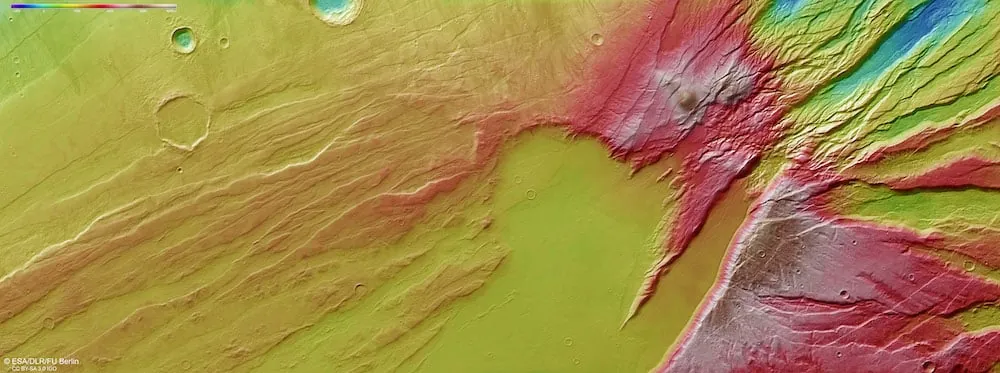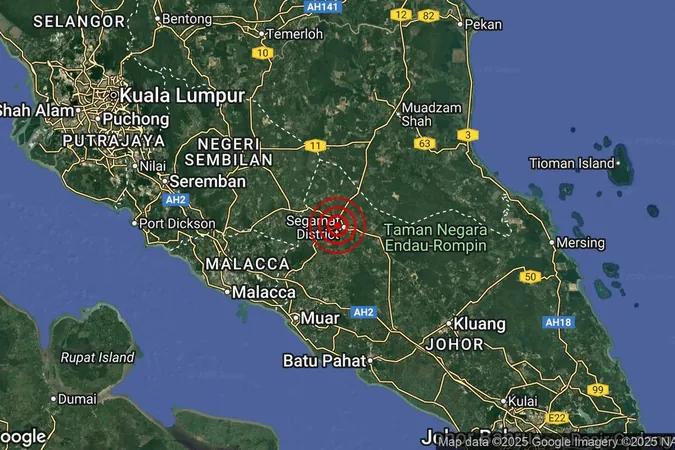
Unveiling Mars' Climate Secrets Through Acheron Fossae
2025-08-08
Author: Mei
Mars' Mysterious Terrain: Acheron Fossae
Mars, with its breathtaking landscapes, holds profound secrets beneath its surface, particularly in a region called Acheron Fossae. This intricate network of deep fissures and valleys resembles ancient battle scars tattooed across the red planet. Recent photographs from the European Space Agency's Mars Express spacecraft illuminate the western edge of this enigmatic geological formation, shedding new light on Mars's tumultuous history and its ever-evolving climate.
The Geological Marvel of Acheron Fossae
Acheron Fossae isn't just any geological formation; it’s a sprawling system of fault-like cracks, known as fossae, featuring alternating sections of raised and lowered terrain. Imagine a shattered chocolate bar: some pieces jut upwards while others sink, resulting in rugged ridges and expansive valleys stretching hundreds of kilometers and reaching impressive depths.
These stunning features weren't formed overnight. They date back over 3.7 billion years to Mars’s geologically vibrant past, when intense heat from beneath the crust caused molten rock to rise, creating the deep cracks we observe today.
Witnessing Mars' Ongoing Transformation
What makes Acheron Fossae particularly captivating is its continuous transformation. The valley floors may appear smooth, yet they are marked by delicate, sinuous lines akin to a river’s flow. However, instead of water, these valleys are packed with a slow-moving, ice-enriched rock, reminiscent of the rock glaciers we have on Earth.
These Martian rock glaciers act as geological time capsules, preserving clues about Mars’s climatic history. Sensitive to climatic shifts, they serve as indicators of how the planet’s environment has fluctuated over time, revealing alternating periods of frigid and warm conditions.
The Dance of Mars' Tilt and Climate Variability
The secret behind these drastic climate variations lies within Mars’s unpredictable axial tilt. Unlike Earth, which maintains stability thanks to the Moon’s gravitational influence, Mars wobbles significantly over eons. Its tilt has varied dramatically, swinging between 15 and 45 degrees, while Earth's has only wavered between 22 to 24.5 degrees.
These shifts, termed Milankovitch cycles, lead to alternating ice ages and warmer periods. During extreme tilts, ice can creep towards the equator before retreating back to the poles during milder times.
Erosion: A Sculptor of Mars' Landscape
Recent images also showcase how erosion has reshaped the Martian landscape over millions of years. Adjacent to the main fossae, the deep cracks give way to flat, dark lowland plains, interspersed with raised mounds and rocky hills, remnants of a once-continuous rock layer carved away by ice and rock flows. This erosion creates a distinct visual transition in the topographical data, with vibrant red and yellow highlands gradually yielding to softer blues, symbolizing lower elevations.
Acheron Fossae: A Natural Laboratory for Future Exploration
Thanks to the ESA's Mars Express spacecraft, which has been meticulously mapping the Martian landscape since 2003, we can grasp the surface of Mars in extraordinary detail. Using its High Resolution Stereo Camera, the orbiter has been capturing the planet’s grandeur in stunning color and three-dimensional detail for over two decades.
As our exploration of Mars continues, formations like Acheron Fossae serve as vital laboratories for unlocking the mysteries of planetary geology and climatic evolution. They remind us of the dynamic nature of planets over geological epochs and highlight the importance of understanding these processes for future Mars missions—both robotic and human—ensuring safe navigation and resource utilization for our neighboring planet.



 Brasil (PT)
Brasil (PT)
 Canada (EN)
Canada (EN)
 Chile (ES)
Chile (ES)
 Česko (CS)
Česko (CS)
 대한민국 (KO)
대한민국 (KO)
 España (ES)
España (ES)
 France (FR)
France (FR)
 Hong Kong (EN)
Hong Kong (EN)
 Italia (IT)
Italia (IT)
 日本 (JA)
日本 (JA)
 Magyarország (HU)
Magyarország (HU)
 Norge (NO)
Norge (NO)
 Polska (PL)
Polska (PL)
 Schweiz (DE)
Schweiz (DE)
 Singapore (EN)
Singapore (EN)
 Sverige (SV)
Sverige (SV)
 Suomi (FI)
Suomi (FI)
 Türkiye (TR)
Türkiye (TR)
 الإمارات العربية المتحدة (AR)
الإمارات العربية المتحدة (AR)